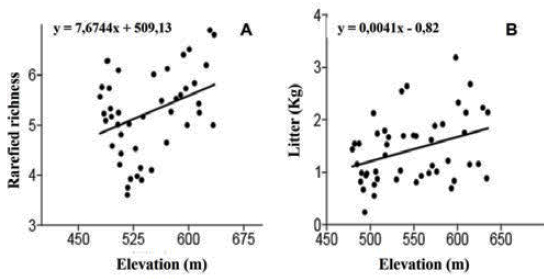Abstract
This study analyzed the role of Caatinga vegetation structure in the accumulation, composition and distribution of litter along an elevation gradient in the Brazilian semi-arid region. Fifty sampling units were established for shrub-tree vegetation analysis, and 50 1-m2 plots for sampling litter. Sampled litter was screened in fractions of leaves, stems, reproductive structures, miscellaneous and animal remains and then weighed. Total accumulated litter weighed 72.3 kg and was composed mainly of stems (45.2%). A positive correlation was found between total litter and elevation, as well as between leaf fraction and richness and basal area, while the stem fraction was negatively associated with richness, abundance and basal area. The results reflect a joint effect of abiotic factors and community structure, which produces heterogeneous environments that favor variation in litter production and quality along the elevation gradient.
Keywords:
elevation gradient; Caatinga; necromass; Serra da Arara



